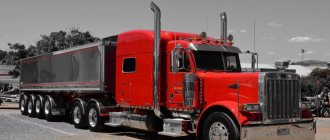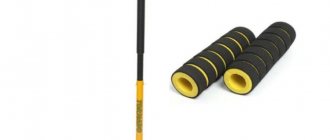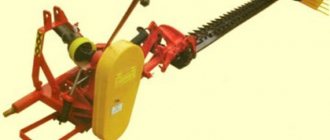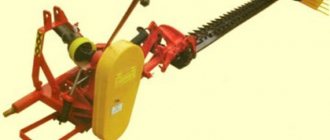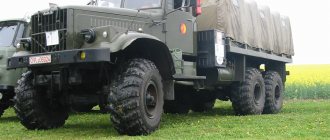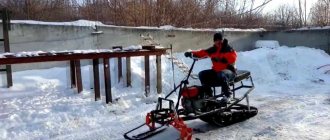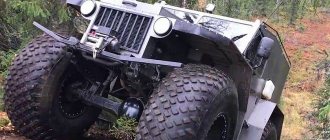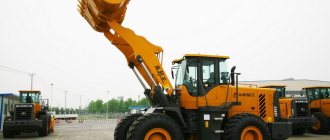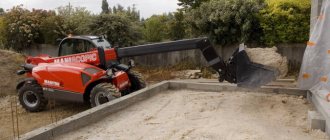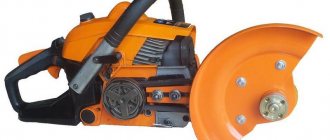In order to deliver cargo to the recipient, trucking companies resort to the help of large equipment. Dump trucks, eurotrucks and semi-trailers transport hundreds of tons of goods every day. However, an ordinary truck will not be suitable for transporting tens of tons of cargo - it will not have enough power. In this case, road trains are used - vehicles consisting of tractors and several trailers.
All over the world they are subject to strict requirements for length and weight. But not in Australia! Heavy equipment is respected there, since a truck is the only option to deliver goods to the desired point. The Australian road train differs from its “colleagues” not only in weight.
In the article we will analyze the features of the equipment, its performance and talk about the leading manufacturers of giant machines.
General characteristics of Australian road trains
These cars are called "road monsters", "giants" and "iron caravans". There is an explanation for this: 175-tonne vehicles move around Australia. The number of trailers in them can reach twenty “tails”!
Each road train is equipped with a powerful rack and huge wheels. Such equipment is not a whim. In hot and desert areas, ordinary wheels will not last hundreds of kilometers.
Protection of the radiator and bumper is necessary for the safety of the car and truck driver from kangaroos (the word “kangaroo” comes from the name of the animal).
Collisions with large mammals are not uncommon. Without a strong box on the front of the road train, such a “meeting” will end in death for the driver.
Scope of use
For hot and deserted Australia, a road train is the only way to transport large loads. In a country with a low population density, building railways is simply not practical.
Powerful trucks are used to transport farm and factory products, livestock, building materials, and furniture. Truckers are revered in the country, as only they can help entrepreneurs with intercity delivery.
Dimensions and load capacity
Almost all countries in the world have a clear requirement for road trains: no more than 18.5 meters in length. Rules are introduced to preserve the integrity of asphalt.
There are few asphalt roads in Australia, so you don’t have to worry about the safety of the road surface. The dimensions of an average Australian road train are 80–115 thousand kilograms of weight and 35–56 meters of length.
Trains of seven and ten trailers are not uncommon. The average car carries about 190 tons of cargo.
Interesting. From time to time, truckers compete in the number of trailers and cargo transported. The record was set several years earlier: a road train pulled 104 trailers. The length of the giant was more than 1,474 meters.
Design Features
The interior of the driver's cabin is almost no different from its “brothers”. However, the external cladding has a number of features.
The most obvious difference between Australian road trains is the impressive, strong, chrome-plated bumpers. A guard is attached to them, which reaches the windshield. This design protects the radiator and driver's compartment from collisions with animals.
A fine grille is attached to the tinted glass. Its task is to preserve fragile parts from small stones. Antennas are installed on the roof of the road train. There is no Internet or mobile communications in the deserts; truckers communicate with the outside world via walkie-talkies.
The cabin is also framed by numerous lighting elements. Powerful headlights are the only source of light for the driver.
In the photos depicting Australian road trains, you can notice another detail: their cabins are covered with genuine leather.
This increases comfort and provides additional softness. For a driver who spends several days on the road without stopping, convenience plays a big role.
Each car is equipped with air conditioning, a refrigerator, a microwave oven and drinking water tanks.
White reflectors are installed around the perimeter of the truck. They are clearly visible in the dark and warn other drivers about the approach of the “giant”.
Specifications
Australian technology is distinguished by high engine performance. Their average power is 500–620 horsepower. The frames are reinforced, which is important for off-road use.
Suspensions, depending on the model and manufacturer, can be pneumatic or spring. There are more sleeping places than in trucks from other countries. The length of the compartment is at least 1.5 meters.
Fuel tanks hold up to 2 thousand liters of fuel. Average consumption is one liter of fuel per kilometer.
Popular cars
In Australia, most local transport is carried out by road trains. The long-distance industry there is seriously developed, and transportation volumes reach 190 tons per tractor. “Damn, how?” - you ask. And like this: Next are a lot of letters, several photos, videos and interesting facts. Australia has been branded as the “land of road trains”. Australian road trains consist of a tractor and two or three trailers; the length of such a train reaches just over fifty meters; there are road trains with seven trailers that are capable of transporting up to 210 tons of cargo.
Despite the fact that the journeys take up to several days, and they often have to drive across the entire continent, it is not customary for them to have a partner. Surprisingly, there are not enough tractor-trailer drivers there, and they are paid normal money. Therefore, they are greedy and prefer to work alone.
There are even government social programs to support drivers. For example, recently the authorities released a special series of maps of the country with roads and marked coffee shops and rest areas for drivers.
Most of the roads there are gravel, although it seems to me that their gravel roads are better than some of our asphalt ones, it is still difficult to move on them - dust and fine sand clog the brake system, ventilation system, etc.
Due to the enormous mass, the braking distance of such a truck is several hundred meters, and even longer on gravel surfaces. This is partly why some trucking companies prohibit drivers from taking hitchhikers and generally stopping along the way unnecessarily.
Most routes pass through or near desert. In places where you can’t last long without shelter from the sun. Therefore, the roads are deserted, most of the area has no settlements at all.
There is practically no road crime. Drivers calmly leave empty trailers near the road and pick them up on the way back - this is a normal occurrence.
Most often on the roads you can see American trucks from Kenworth, which are the leader in the Australian market. These trucks have only one serious competitor - Mack - also an American company that has been serving the Australian market for more than forty years.
The local Kenworths and Macks are locally designed and assembled. The “Americans” are simply not adapted to work in the Australian regime, they are designed for other loads and would not last long here. In addition to the fact that Australian Mack and Kenworth tractors differ from their American ancestors in their right-hand drive, they are equipped with the most powerful engines (usually from 450 hp) and have a reinforced frame.
A distinctive feature, of course, is the massive protective frame, from which the word “kenguryatnik” originates. Here it has a real need for installation, since the driver of the road train is so severe that he will not brake if even a large animal comes onto the road. This is explained by the fact that using emergency braking on such a car is simply life-threatening.
Because tractor trailers typically travel with multiple trailers, they also have double the number of compressed air tanks needed to operate the tractor's and trailer's braking systems. And Australian tractors are more expensive than all others in the world.
Overtaking such a truck is a whole test, testing your balls against steel. The truck goes about 100 km/h, it doesn’t matter whether it’s on cruise control or not, but it won’t slow down and won’t push to the right. The truck creates strong aerodynamic turbulences that press the neighboring car against the wheels, + pillars of dust and small stones. Even being near the road is dangerous. The truck itself can reach a length of up to 56 meters, so overtaking should be done on a long straight section, with good visibility for a couple of kilometers (fortunately, there are many of these in Australia). If the road train is absolutely gigantic, then, as a rule, it comes with escort vehicles. In this case, you must wait until the driver of the rear car reports ahead about the impending overtaking and gets the go-ahead from there, after which he gives you a sign.
And finally, a couple of videos with photos:
Leading manufacturers
Road trains for Australian realities are produced by about ten manufacturers. Three brands took the leading positions. Videos featuring their “pets” receive thousands of views. Spectacular maneuvers and dimensions of road trains can be assessed online. We will take a closer look at the leading companies.
Powertrans
The total weight of these machines reaches 400 tons. The peculiarity of the company is that it produces equipment for the country's mining industry.
The trailers have their own engines, and the “locomotive” is attached to a powerful truck.
The pride of the company is the tractor model T 12 50 PiT Hauler. It has a 760 horsepower engine. The second engine is included in the trailer. The electronic system synchronizes the work.
The car is among the top most powerful construction units.
Kenworth
This company deservedly takes first place in the ranking of Australian truck drivers. The company accounts for almost half of the local automobile market.
Euro 6 class engines run on diesel, fuel consumption is economical. Massive fuel tanks help keep you calm in deserted areas. They include 2400 liters of diesel! This is a huge plus, since gas stations are rare.
Each road train is equipped with integral berths, an automatic transmission, air conditioning and a minimum set of equipment. A massive hood framed with protection will protect the driver from injury even in the event of an accident.
Mack
In second place of the top is the Mac company.
Trucks first entered the market in the first half of the last century. In the middle of the 20th century. mass local assembly of road trains began. The power of the Mac engine is slightly inferior to its competitors - 500 horsepower. In third-generation trucks, the figures increased slightly - 535 “horses”.
The suspensions and frames are reinforced, the hood is long, the guard is durable, and the wheels are wedge.
Drivers from the USA order Mac equipment: the engine power is more than enough for American roads.
Tractors
About tractors. They are also not similar to their counterparts from other countries, even if they are of the same brand. Firstly, the frame here is necessarily lengthened and strengthened. The engine is installed upon request and, as a rule, develops at least 600 hp. By the way, this is why the hood of the “Australians” is often changed - it is higher and shorter, otherwise the engine will not fit. Non-synchronized gearboxes, drum brakes. There are four fuel tanks (two on each side), with a total capacity of 2000 liters; because a loaded train on a dirt road consumes about one hundred liters per “hundred”, and the distance between gas stations can reach 500 kilometers (just like ours)! The now well-known “kenguryatnik” (it was from here that it migrated to jeeps), a two-meter VHF antenna, mandatory air conditioning. Above the hood (or above the cabin) there are air filter necks placed upward, and there is a mesh on the windshield. This is protection from the ubiquitous reddish dust and stones. By the way, this is why wheels, tanks and bumpers are rarely chromed here - the coating wears off quickly...
The nuances of overtaking on the road
You won’t see “iron caravans” on the roads of Russia and the CIS - the equipment will not pass weight control. But if you find yourself in Australia, you need to know the rules for overtaking road trains.
Remember that the length of the car is at least 52 meters. Its speed is at least 110 kilometers per hour. In order to get out from behind the train in time, you need another 75 meters, an additional 75 meters will be needed to return to the road. It turns out that for safe overtaking you need at least 1 kilometer of clear road ahead.
It is better to perform the maneuver on straight sections, while keeping both eyes open! When in doubt, don't take risks.
Indigenous Australians
Australia is a large and developed country and it has its own automobile industry. Even the cargo is represented by the only company RFW (after the initials of the owner Robert Frederick Whitehead). Naturally, it does not make any impact on the market, it is listed in the “Other” column, but since 1969 it has been building interesting heavy trucks in single copies. Mostly firefighting or special vehicles according to the standard scheme: the engine and transmission are purchased, the cabs, axles and frames are made by ourselves. Among the latter is a monster with an active semi-trailer, which therefore has an impressive 14x14 wheel arrangement. In 2000, assembly began from “firefighter” vehicle kits... TATRA T816 “Liva” series with a front blade.
But this is now. And before 1983, there were twice as many Australian truck manufacturers! Another private company with the proud name Leader has built about a thousand road trucks with 6x4 and 8x4 wheel arrangements. Mostly hoodless (Overlander series), but there were also bonneted (Big B, later Challenger).
More precisely, there was a third manufacturer who built the only copy of the heavyweight under the RhodesRidley brand. The name is not easy, but it is a tradition: the authors of the project were the owner of the mining company Don Rhodes and engineer Harold Ridley. In 1955, they decided to reduce the cost of ore transportation by developing a super-powerful machine with a gross weight of 230 tons (with two trailers). They built it for three years, without drawings, sketching out the components with chalk on the office door (oh, that’s familiar). Features of the car - 2(!) GM diesel engines of 200 hp each. (from the tank) and the wooden base of the cabin. They built it, tested it, but... at that moment the road legislation changed, and the project became “economically unfeasible.”
In the 90s, the Australians, not rich in history, restored the truck and took it to various exhibitions and shows, allowing us to say that there were still three truck manufacturers in Australia.
